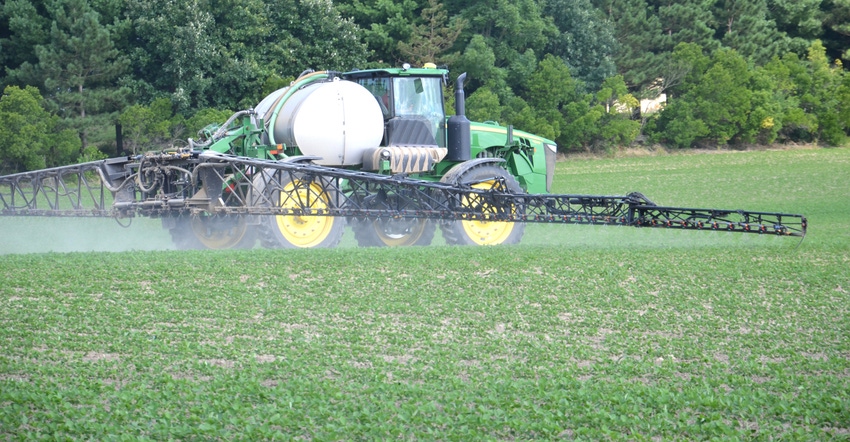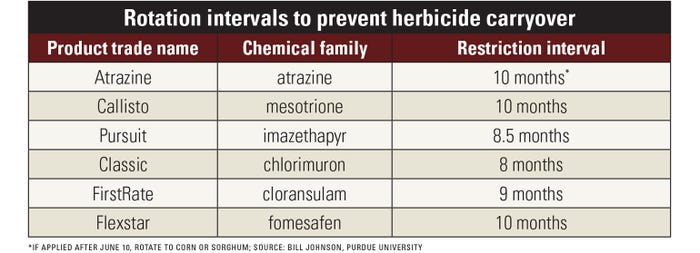
Checking herbicide labels for plant-back restrictions for products you applied the previous year is important before every growing season. It may be downright critical in 2020.
“Planting was so late in 2019 because of rain delays that many herbicides were applied later than normal,” says Bill Johnson, Purdue University Extension weed control specialist. “Because it remained wet after planting, spraying was delayed, too. That also contributed to later-than-normal herbicide applications.”
Throw in extreme dry weather in parts of Indiana and other Midwest states in mid- to late summer through midfall, and 2020 could be an interesting year for potential herbicide carryover injury if you don’t pay attention to plant-back restrictions.
“You need to review what you applied and when you applied it, field by field,” Johnson says. “Herbicide carryover depends on various factors, depending upon which herbicides you applied. Some have much longer plant-back restrictions than others. That’s because some chemicals don’t break down as fast, and the potential for carryover into the next season is greater.”
The chemicals that have a higher risk of persisting in the soil and causing injury in subsequent years include atrazine, fomesafen, mesotrione, chlorimuron, imazethapyr and cloransulam. For product names and plant-back restrictions in months, check the table below.

Carryover factors
Several of these chemicals have long half-lives. That’s the time it takes for half the chemical applied to break down in the soil, Johnson says. For some herbicides under most soil conditions, the half-life can vary from 40 to 100 days.
“Weather is usually the driving condition which determines how much carryover we see from herbicides applied the previous year,” Johnson says. “Weather conditions affect how quickly active ingredients break down in the soil.”
Drier, cooler conditions tend to slow breakdown of active ingredients of herbicides. For example, dry conditions extend the half-life, because they hinder microbial and chemical processes within the soil that require moisture to work.
Tillage system can also affect potential for carryover, Johnson notes. Tillage tends to stimulate microbial activity and dilute herbicide residues by mixing the soil, he says. Aggressive spring tillage can sometimes minimize potential for carryover if tillage is part of your system.
Soil pH is a factor, as well, Johnson says. Extremes in soil pH cause some herbicides to be more persistent. A target pH of 6.5 to 7.0 reduces potential for carryover of most corn and soybean herbicides used in Indiana. However, sulfonylureas, which include chlorimuron, and atrazine aren’t readily broken down in soils with pH above 6.8. Conversely, imazethapyr is more likely to cause injury in soils with a pH lower than 6.5.
Injury symptoms sometimes show up in pockets across a field. That’s because soil pH is seldom uniform across a field. Refer to herbicide labels for notes about possible pH effects.
About the Author(s)
You May Also Like




